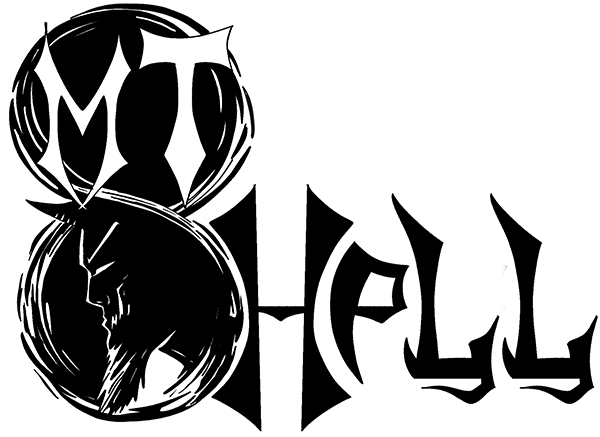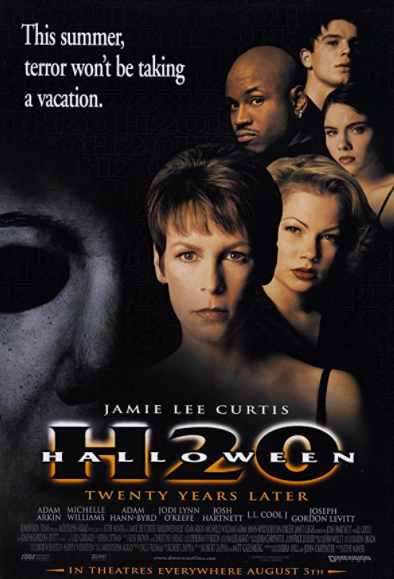
‘Halloween H20: 20 Years Later’ (1998); Exploring its Strengths and Weaknesses
Steve Miner’s Halloween H20 seems like it was destined to generate mixed feelings. For starters, the man who played Dr. Loomis, Donald Pleasence had died, so he obviously wouldn’t appear in the movie. Fortunately, they didn’t cast someone else to play him, aside from a brief voice impersonation by Tom Kane, and they did not egregiously try to resurrect him through CG animation. These were wise decisions.
However, what might disappoint some fans is that Halloween H20 does abandon the whole “Thorn Trilogy” story arc. Some had been invested in that storyline, and it appeared to be casually tossed away, or sidestepped, if not nuked from orbit. While not everyone appreciates Halloween: The Curse of Michael Myers, some did and wanted a follow-up, or they were just thrown off by the abandonment of that story.
Then again, there are always some who wish the story had evolved with Michael Myers’ niece, Jamie Lloyd (Danielle Harris), as the new killer, or maybe as a strange protégé (admittedly, either story idea might have ended up terrible, but the potential was there). On the bright side, Halloween H20 did make a few bold ideas come to life, and we’ll look at those first.
Halloween H20: Strengths?
When looking at horror films, one of the go-to topics will be “the kills.” Halloween H20 actually has a few decent ones. It also pays to remember that, for the most part, the original Halloween featured what might be considered “meat and potato” type kills. It’s mostly just him swiping at people with knives or, in the case of Annie Brackett (Nancy Kyes), a combination of choking and slicing. Steve Miner’s film is not the goriest in the Halloween franchise, but the death of the character Sarah Wainthrope (Jodi Lyn O’Keefe) is particularly memorable (or painful to watch).
As another possible strength, this film doesn’t abandon the premise that Michael (Chris Durand) and Laurie Strode (Jamie Lee Curtis) are brother and sister — unlike 2018’s Halloween (which sidesteps that, as well as scrapping both the “Thorn Trilogy” story and practically all unique elements from this film, aside from the “Laurie’s revenge” motif).
Personally, I never had a problem with them being related, as I think it adds some depth to the characters. Sure, it humanizes Michael a bit, but less so than similar examples, such as the relationship between Dexter Morgan (Michael C. Hall) and his brother, Brian (Christian Camargo), on the series Dexter. It complicates their dynamic rather than subtracting from it.
I also like how Laurie has largely moved on from the traumatic events of Halloween 1 & 2. In fact, she even has a boyfriend (Adam Arkin), even though they seem awkward and timid with each other. She has moved away from the Myers’ house and is the headmistress at a boarding school. Also, when Michael arrives and the shit predictably hits the fan, there’s never an expectation that she’d attempt to alert Dr. Loomis, even if he was alive. At the same time, this perhaps helps shatter the illusion that Michael could easily kill them all.
Halloween H20: Weaknesses?
Yes, I feel I need to discuss this film’s weaknesses a bit, too, and one of the weaknesses is actually Laurie’s strength. Yes, I know, you might be saying “That’s sexist!” but hear me out. Back when Myers was in his house in Haddonfield, he had what might be called “home-field advantage.” He was basically in his element, where he would stay for a time. Take him out of that and what do you have? Well, it’s a bit like taking Freddy out of Elm Street. Sure, you could do it and maybe it can work, but that certainly doesn’t mean it will work as well.
Add that to the growing perception that Laurie is ready, willing, and able to kick Michael’s ass and a lot of the tension is gone. Now, honestly, I was never that afraid of Michael Myers or most slasher villains, so to lose the fear factor, even more, doesn’t really do this movie favors.
Yes, we might look at the example of someone like Ellen Ripley (Sigourney Weaver), who ended up kicking some alien ass in “Aliens.” However, that was in outer space and more obviously an action movie. While I’m glad they didn’t put Michael in space (as they did with Jason, the Leprechaun, and even Pinhead!), I’m not sure they put him in a compelling place in Halloween H20. It seems like the boarding school environment didn’t add much and, frankly, the matchup between Michael and Laurie also seems to end a little too quickly.
The Big Critique
Plenty of horror movies fail to fully explore their dynamics. Others perhaps benefit from not doing so. At the end of the day, it can be hard to walk that fine line between revealing too little or too much. I can imagine writing Michael Myers is tricky for that reason. In contrast, in some characters, you fully expect them to get cheesier and to have more quirky details revealed. For example, one might expect Chucky (Brad Dourif) to delve deeper into the whole voodoo doll thing, especially when the character actually is a frickin’ doll. Similarly, everyone would expect The Evil Dead franchise to summon some crazy demons.
However, just like you wouldn’t expect a whoopie cushion scene in Henry: Portrait of a Serial Killer, you probably don’t want Michael to become less mysterious, less threatening than in previous films. In this case, Michael Myers doesn’t really come across as supernatural, or like an evil, mysterious force. He’s a bit more like just some random guy in a Halloween mask. He might still be dangerous, but he doesn’t seem as much like Michael Myers.
I have heard others make this critique, and I’m not trying to rip them off here. It’s just something I definitely agree with. I would contrast it with “Part 4,” in fact. Yes, that movie has some detectable flaws, too, but when Michael Myers falls into a mineshaft, it somehow still feels like it’s him. In fact, to prove I’m not screwing around here and playing favorites with this critique, I’d even say the Michael Myers from the much-hated Halloween: Resurrection is more like the old school Michael than the one from Halloween H20.
Final Thoughts
On the surface, it probably seems like I hate this movie, or like this is a hit piece. I actually don’t hate it, but just think it should’ve been beefed up a bit more, and some things could’ve been better. Yes, Michael’s abandoned house remains freakier than the boarding school environment, and the film lacks the flair of Dr. Loomis (for obvious reasons). Still, this movie ends on a respectable note with a bold decision regarding the main villain’s fate. That alone might be respectable, in some way. And, holy shit, I need to stop typing now…
What are your thoughts on Halloween Water…oops, I mean Halloween H20?! Let us know in the comments! (Just don’t pin us to a tree with a vehicle and lop off our heads over this article)
Movies n TV
Wheel of Time A Question of Crimson Is a Political Espionage Delight
Episode two of Wheel of Time felt like the beginning of a long journey. Stories are unfolding, lives are changing, and blood is spilling.
Let’s discuss.
The story
We begin this episode in the past with Elayne’s mother, Queen Morgase. It turns out her rise to the throne was a bit, shall we say, cutthroat. So when she shows up at the White Tower, Siuan is concerned.
She might have reason to be, too.
Meanwhile, Rand, Egwene, Moiraine, Lan and Aviendha are in the Spine of The World. As they travel through some of the most breathtaking lands I have ever seen on a TV show, Egwene is plagued with nightmares. We think at first that’s just her trauma working itself through her system. But we soon find out that it might not be that straightforward.
Finally, Perrin returns home to heal after his hand is almost cut in half. But when he gets there he finds the town has been infested by Children of The Light. And they’re looking for him.
What worked
There was something heartwarming in this episode about political espionage and choking religious persecution. And that is Elayne’s relationship with her family.
I have consumed a lot of fantasy content with royal families. And I have never once heard a princess call her mother ‘Mum’. I’ve never seen royal siblings get along. And I have sure as hell never seen a princess have a good relationship with her step-parent.
This was refreshing. Even though Queen Morgase is kind of a horrible person she seems like a good mother. And that’s an unexpected delight.
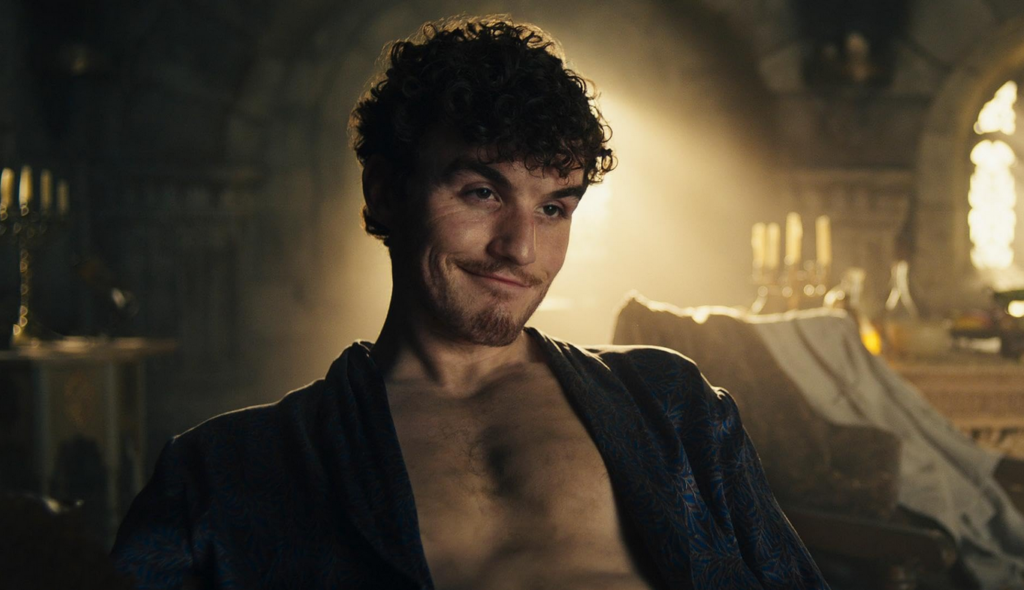
Of course, this is just one storyline among many. And while this can sometimes be overwhelming, in this case it wasn’t.
I’ll be honest, some of these storylines are going to drag for me. I know this because I’ve read some of the Wheel of Time books and I have an idea that not all the characters exactly pique my interest.
No one likes all the characters. No one likes all the storylines. While I am here for the political espionage between Queen Morgase and Siuan, not everyone likes it. While others might be fascinated with Selene trying to win Rand back, I couldn’t care less.
Having multiple storylines keeps everyone’s attention better. So long as things don’t get out of hand. Things can easily get out of hand. But this seems to be managed well.
So far.
What didn’t work
As I mentioned above, I’m not thrilled with Rand’s story at this point. And while it’s fine to not like a storyline when there are this many to choose from, it’s not fantastic that the one I like the least is the one involving our two main characters. And anytime we were with the team at the Spine of The World, the only thing that brought me joy was Moirain’s hat. It reminded me of Stockard Channing’s hat in Practical Magic.
The problem is that Rand is Charlie Brown with controversial magical powers. He is boring, serious, and pessimistic.
And yes, I understand that he has a heavy emotional burden and he’s the Dragon Reborn and that’s quite taxing and all. But let’s be fair, there isn’t a single person in this show that doesn’t have a heavy burden. And most of them manage to be fun occasionally.

All that being said, this episode of Wheel of Time did exactly what it needed to do. It set up conflicts at each of the three locations. It established emotional ties between the characters and the events. And it established goals for everyone.
This was, in short, a solid episode. Not groundbreaking, not mind-blowing or life changing. It was simply good. It was entertaining and moved the plot forward.
Well done.
 (3.5 / 5)
(3.5 / 5)
Movies n TV
Wheel of Time Returns With A Bang
Wheel of Time is back for season three. There are mixed feelings regarding this. Last season, there were some serious pacing issues. And some serious sticking to the book’s storyline issues. But we’re two seasons in, and we don’t give up so easily. So let’s dive into episode one, To Race the Shadow.
By the way, I highly recommend watching this episode with the subtitles on. You’ll see why.
The story
We begin this episode with Liandrin facing a trial of sorts for her rampant betrayal. She does her best to gaslight her Aes Sedai sisters into thinking that Siuan Sanche is the real traitor.
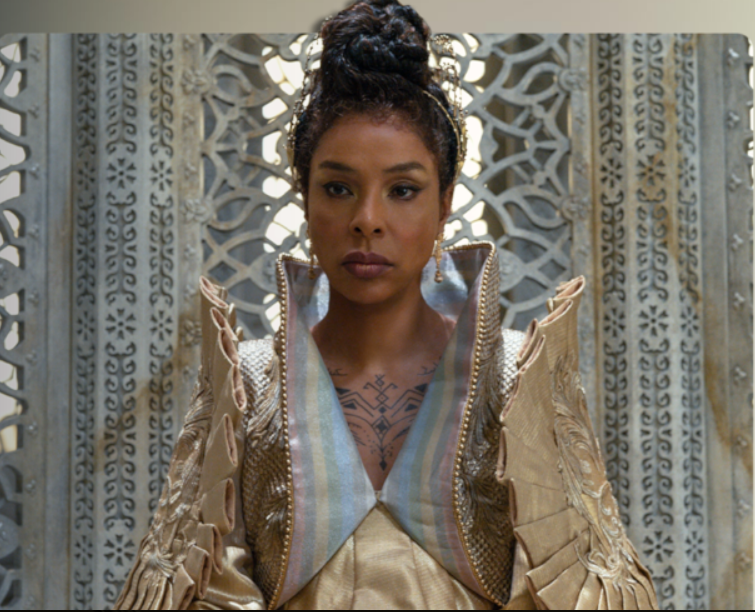
When that doesn’t work, she reveals how many Black Aes Sedai have actually infiltrated the tower.
Spoiler, it’s a lot.
In the aftermath, our whole team gathers to drink and enjoy one night of relaxation before they head out to the Tear to form an army for Rand. All is going well until they’re attacked by myriad creatures and a sentient axe.
What worked
This episode was long. It had a run time of an hour and eleven minutes. And a lot of that run time was spent in heavy dialog scenes.
Fortunately, these were well-done scenes.
If you’re going to have a lot of talking scenes, there are good ways and bad ways to do it. Last season, we saw lots of examples of the bad way to do it. But this episode did it well. For one thing, other things were going on while conversations were taking place. The characters are drinking, playing games, walking through an interesting city. And the scenes themselves didn’t stretch out. They weren’t repetitive. We heard what the character had to say, then we moved on.
It was also nice that the point of these scenes wasn’t just info dumps. We had character development. We had romantic interactions. We had plot development and foreshadowing.
Overall, this episode felt like what it was. A moment of calm before a storm.
Taking a step back, I’d be remiss if I didn’t address the fight scene at the start of the episode. Because it was epic.
The magic looked amazing. The martial arts that went along with it looked fantastic. The costumes were beautiful. It was just incredibly fun to watch.
More than that, it was emotional. We lost some characters in that fight that were important. And it was clearly emotionally shattering for many of our characters, who found themselves betrayed by people they trusted.
So many of them.
It was a great way to open the season.
What didn’t work
Despite that, this episode wasn’t without its flaws.
First off, there were a lot of dialog scenes. And they were good scenes, as I’ve already discussed. But it was one after another after another. And when your episode is, again, an hour and eleven minutes, it’s maybe a little much to have so much chit-chat. Couldn’t some of these conversations, important as they were, have been moved to maybe another episode?
Finally, I want to talk about Egwene’s travel through the arches.
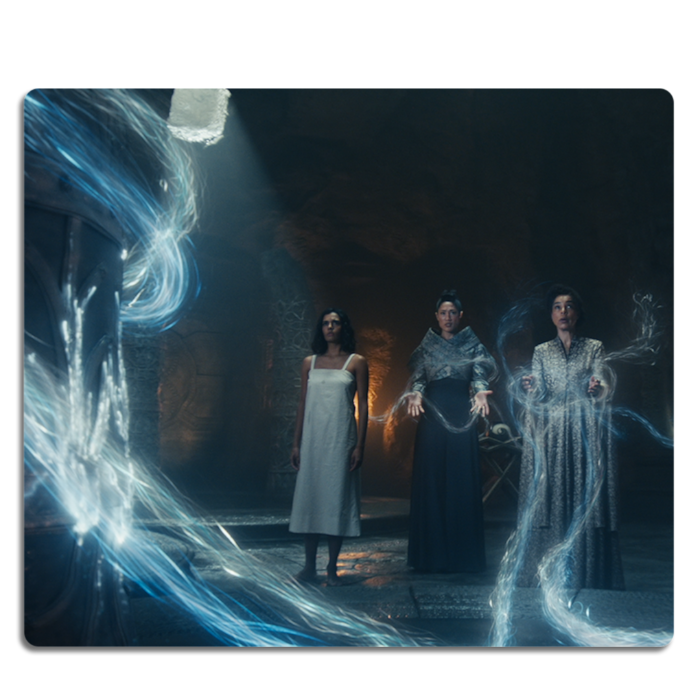
I feel like maybe there were some deleted scenes here. Because there must have been more to that visit than what we saw, right?
We could have seen Egwene battle Rand. That would have been badass and emotionally devastating. We could have seen her with a quiet life with Rand back home at the Two Rivers. We could have seen anything except for the quick clip of Rand in a bloody river, followed by Egwene being shoved back out in a bloody shift.
Bad job. But at least it wasn’t an extended scene of Moiraine collecting bathwater, and then taking a bath while looking sad. If we’d started this season with another scene like that, it might have broken my brain.
Amazon dropped the first three episodes at once. So we’ll be back soon to talk about episode two. See you then.
 (4 / 5)
(4 / 5)
Movies n TV
Entertaining as hell: Eight Legged Freaks (2002) Review
Early 2000s is a special era for the industry. It accepts the cheesiness and corniness of movie making, in turn producing some gems in their own right. Eight Legged Freaks starring David Arquette and young Scarlet Johanson is a horror comedy about giant spiders who overtake a small town. As crazy as that premise sounds, the movie surprisingly has a ton of heart and is super entertaining. Let’s review, shall we?
Plot
We start Eight Legged Freaks with a shot of toxic waste spilling into the water supply of Joshua, a spider farm owner. He is friends with Mike, one of our protagonists, who is a science geek and a spider enthusiast. Mike notices something quite right upon visiting Joshua, but no one takes him seriously. We are then introduced to the rest of the crew. Mike’s mother Samantha, the town sheriff, is too busy chasing Ashley, his sister, who is dating the town mayor’s son Bret (something Samantha does not approve of). We also have Chris, who returns to the town to save his father’s legacy in the town mines. He has opposition from Wade, Bret’s father, who wants to use the mines for his business ventures. Lots of drama going on that will only get juicier once the spiders get loose.
The creepy crawlies quickly dispose of Joshua and make their grand appearance after Ashley rejects Bret’s advances, abandoning him in the middle of a desert. A glorious chase sequence ensues as the spiders make their way towards the town, wreaking havoc on its residents. In a true horror fashion (which the movie acknowledges), it takes some convincing from Mike and then from Samantha for the town to take the threat seriously. The tongue-in-cheek style of narrative adds the comedy aspect to a movie that would otherwise burn out fairly quickly.
The remaining characters hide out in a shopping mall as it’s the only somewhat sturdy building in the area. This doesn’t last long as the spiders break in, forcing them to run through the mines. Their resources to fight the creepy crawlies off are limited as the methane gas doesn’t allow them to use firearms. Such conditions require resourceful thinking from Chris, who uses perfume to fend off the leader of the spider group and save himself during the climax of the movie.
Character dynamics are not forgotten once the action kicks in. We have Chris confessing his long-term feelings for Samantha which she knew all along, which provided some comedic relief. Bret also reunites with Ashley and apologises for being an asshole. Mike finally gets the appreciation he deserves as his knowledge saves the townsfolk more than once during the whole ordeal.
We end the movie with the town’s radio show person telling the story as an urban legend during his segment. This brings it into question – how much of it happened the way he said it did? We can only guess…
Overall thoughts
Eight Legged Freaks is a fun creature feature with some self-aware commentary on genre tropes that doesn’t take itself too seriously. The acting is good, the pacing fitting and the characters are likeable enough for you to want them to make it through. Definitely a must watch, if you don’t suffer from arachnophobia, that is.
 (5 / 5)
(5 / 5)

